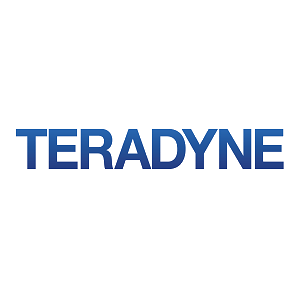
Warner Bros Discovery Inc
NASDAQ:WBD


| US |

|
Johnson & Johnson
NYSE:JNJ
|
Pharmaceuticals
|
| US |

|
Berkshire Hathaway Inc
NYSE:BRK.A
|
Financial Services
|
| US |

|
Bank of America Corp
NYSE:BAC
|
Banking
|
| US |

|
Mastercard Inc
NYSE:MA
|
Technology
|
| US |

|
UnitedHealth Group Inc
NYSE:UNH
|
Health Care
|
| US |

|
Exxon Mobil Corp
NYSE:XOM
|
Energy
|
| US |

|
Pfizer Inc
NYSE:PFE
|
Pharmaceuticals
|
| US |

|
Palantir Technologies Inc
NYSE:PLTR
|
Technology
|
| US |

|
Nike Inc
NYSE:NKE
|
Textiles, Apparel & Luxury Goods
|
| US |

|
Visa Inc
NYSE:V
|
Technology
|
| CN |

|
Alibaba Group Holding Ltd
NYSE:BABA
|
Retail
|
| US |

|
JPMorgan Chase & Co
NYSE:JPM
|
Banking
|
| US |

|
Coca-Cola Co
NYSE:KO
|
Beverages
|
| US |

|
Walmart Inc
NYSE:WMT
|
Retail
|
| US |

|
Verizon Communications Inc
NYSE:VZ
|
Telecommunication
|
| US |

|
Chevron Corp
NYSE:CVX
|
Energy
|
Utilize notes to systematically review your investment decisions. By reflecting on past outcomes, you can discern effective strategies and identify those that underperformed. This continuous feedback loop enables you to adapt and refine your approach, optimizing for future success.
Each note serves as a learning point, offering insights into your decision-making processes. Over time, you'll accumulate a personalized database of knowledge, enhancing your ability to make informed decisions quickly and effectively.
With a comprehensive record of your investment history at your fingertips, you can compare current opportunities against past experiences. This not only bolsters your confidence but also ensures that each decision is grounded in a well-documented rationale.
Do you really want to delete this note?
This action cannot be undone.

| 52 Week Range |
7.69
27.23
|
| Price Target |
|
We'll email you a reminder when the closing price reaches USD.
Choose the stock you wish to monitor with a price alert.

|
Johnson & Johnson
NYSE:JNJ
|
US |

|
Berkshire Hathaway Inc
NYSE:BRK.A
|
US |

|
Bank of America Corp
NYSE:BAC
|
US |

|
Mastercard Inc
NYSE:MA
|
US |

|
UnitedHealth Group Inc
NYSE:UNH
|
US |

|
Exxon Mobil Corp
NYSE:XOM
|
US |

|
Pfizer Inc
NYSE:PFE
|
US |

|
Palantir Technologies Inc
NYSE:PLTR
|
US |

|
Nike Inc
NYSE:NKE
|
US |

|
Visa Inc
NYSE:V
|
US |

|
Alibaba Group Holding Ltd
NYSE:BABA
|
CN |

|
JPMorgan Chase & Co
NYSE:JPM
|
US |

|
Coca-Cola Co
NYSE:KO
|
US |

|
Walmart Inc
NYSE:WMT
|
US |

|
Verizon Communications Inc
NYSE:VZ
|
US |

|
Chevron Corp
NYSE:CVX
|
US |
This alert will be permanently deleted.
Warner Bros Discovery Inc
Warner Bros Discovery Inc. emerges as a dynamic powerhouse in the media and entertainment industry, representing the fusion of two iconic names: WarnerMedia and Discovery, Inc. This corporate merger, consummated in 2022, was orchestrated to blend WarnerMedia's strength in film and television production with Discovery's expertise in non-fiction and international content. The combined entity leverages an extensive portfolio that includes beloved brands such as HBO, Warner Bros., CNN, and the Discovery Channel. This diverse range of assets positions Warner Bros Discovery to thrive in an ever-evolving media landscape where streaming services, traditional television, and cinematic experiences blend seamlessly. The strategic alignment allows Warner Bros Discovery to create, distribute, and monetize content across multiple platforms, catering to global audiences.
In monetizing its vast array of content, Warner Bros Discovery employs a multifaceted approach. The company generates revenue through various streams, such as direct-to-consumer subscriptions, advertising, content licensing, and theatrical distribution. Platforms like HBO Max and Discovery+ serve as integral components of its digital strategy, where subscribers pay to access a vast library of films, series, documentaries, and original programming. In parallel, its traditional cable networks and production units capitalize on advertising revenue and syndication deals. The theatrical release of films provides another significant income stream, bolstered by a storied history of blockbuster hits. Through these revenue channels, Warner Bros Discovery not only captures diverse market segments but also adapts to shifts in consumer behavior, ensuring its place at the forefront of the entertainment industry.

Warner Bros Discovery Inc. emerges as a dynamic powerhouse in the media and entertainment industry, representing the fusion of two iconic names: WarnerMedia and Discovery, Inc. This corporate merger, consummated in 2022, was orchestrated to blend WarnerMedia's strength in film and television production with Discovery's expertise in non-fiction and international content. The combined entity leverages an extensive portfolio that includes beloved brands such as HBO, Warner Bros., CNN, and the Discovery Channel. This diverse range of assets positions Warner Bros Discovery to thrive in an ever-evolving media landscape where streaming services, traditional television, and cinematic experiences blend seamlessly. The strategic alignment allows Warner Bros Discovery to create, distribute, and monetize content across multiple platforms, catering to global audiences.
In monetizing its vast array of content, Warner Bros Discovery employs a multifaceted approach. The company generates revenue through various streams, such as direct-to-consumer subscriptions, advertising, content licensing, and theatrical distribution. Platforms like HBO Max and Discovery+ serve as integral components of its digital strategy, where subscribers pay to access a vast library of films, series, documentaries, and original programming. In parallel, its traditional cable networks and production units capitalize on advertising revenue and syndication deals. The theatrical release of films provides another significant income stream, bolstered by a storied history of blockbuster hits. Through these revenue channels, Warner Bros Discovery not only captures diverse market segments but also adapts to shifts in consumer behavior, ensuring its place at the forefront of the entertainment industry.
Studio Leadership: Warner Bros. Discovery now leads the 2025 global box office, crossing $4 billion in box office revenue and launching several successful films in Q3.
Streaming Growth: HBO Max is now available in over 100 countries, has added 30 million new subscribers in three years, and is projected to reach over 150 million subscribers by the end of next year.
Profitability Turnaround: The streaming segment will deliver over $1.3 billion in EBITDA this year, a dramatic improvement from a $2.5 billion loss three years ago.
Strong Content Pipeline: Warner Bros. Television received 14 Emmy awards in Q3, and HBO was recognized with 30 Emmys, highlighting consistent success in TV and original content.
Debt Reduction: The company lowered its net leverage ratio to 3.3x EBITDA after paying down $1 billion from its bridge loan facility in Q3.
Guidance & Ambition: Studio EBITDA is expected to exceed $2.4 billion this year, advancing toward a $3 billion EBITDA target.
Streaming ARPU: US streaming ARPU faces near-term pressure but is expected to return to growth in the back half of 2026.
































